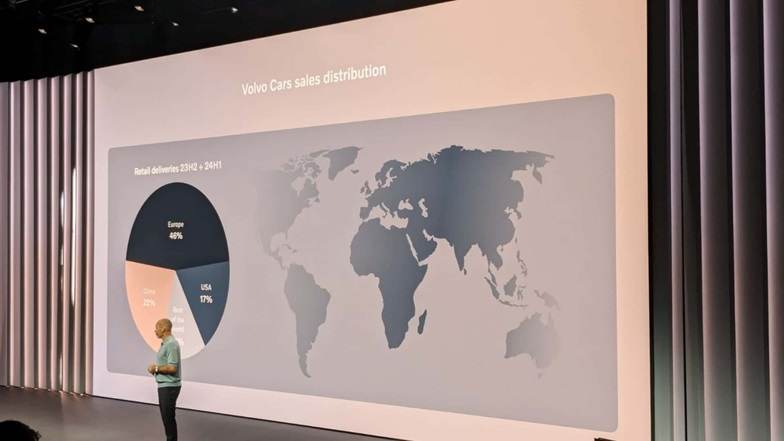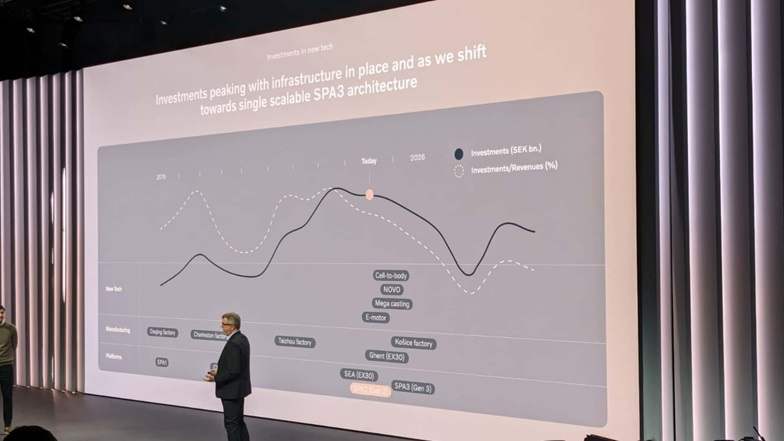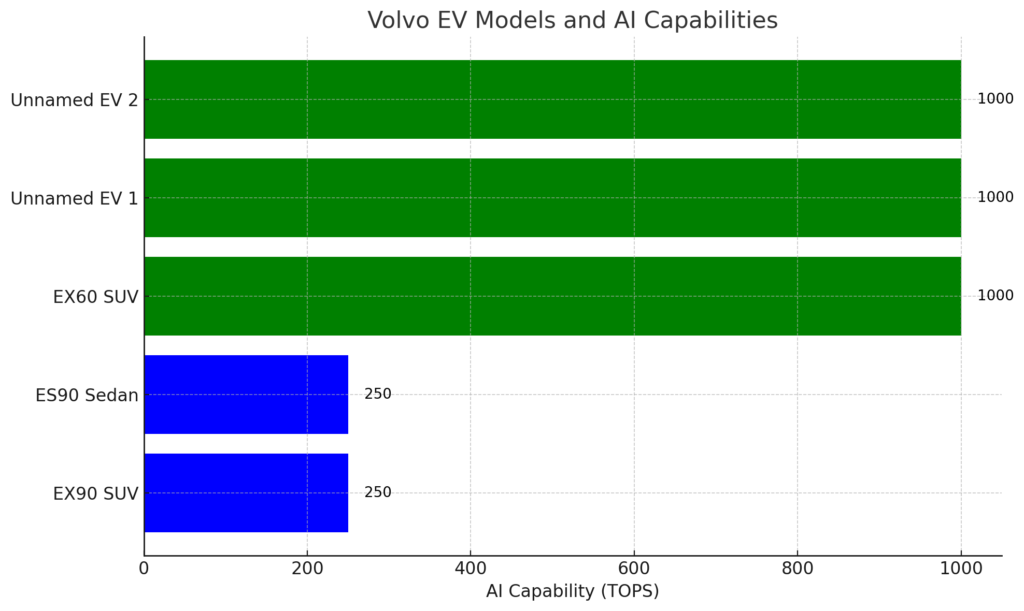Volvo Electric Revolution Will Be Among 5 New EVs Built On Next-Gen Platforms, At Volvo’s recent Capital Markets Day in Sweden, the automaker revealed exciting updates in its journey towards electrification, safety, and AI.
At Volvo’s recent Capital Markets Day in Sweden, the automaker revealed exciting updates in its journey towards electrification, safety, and AI. With plans for five new electric vehicles (EVs) by 2030, a new platform, and an in-house software stack, Volvo is positioning itself as a tech-forward company. The company also announced its deepening partnership with Nvidia, emphasizing its focus on autonomous driving technologies.

Volvo’s Transformation: Key Announcements
- Five New Electric Vehicles by 2030
- New SPA3 Platform with Enhanced Efficiency
- Superset Tech Stack for Modular Flexibility
- Collaboration with Nvidia on Advanced AI Chips
Volvo’s EV Plans: U.S. vs. Europe
While Volvo’s EV growth in the U.S. has been slow, it’s gaining momentum in Europe. Volvo isn’t rushing to develop AI and EV technologies but is focusing on quality and safety to achieve its ultimate goal—“zero collisions.”
Five New EVs Coming Soon
Volvo’s lineup of new EVs starts with the EX90 electric SUV and will expand with several other models. Learnings from the EX90 will fuel the development of the ES90 electric sedan, designed for global markets like the EU, U.S., and China. The ES90 is expected to challenge luxury rivals with its SPA2 platform, which is already used in the EX90.
But Volvo isn’t stopping there. The EX60 mid-size electric SUV, built on the new SPA3 platform, will compete directly with the Tesla Model Y. This platform will include advanced features like Tesla-style mega-castings, next-gen software, and increased motor efficiency. Three more EVs are also in the works, though details remain scarce.
EX90 vs. ES90 vs. EX60
| Model | Platform | Market Focus | Key Features |
|---|---|---|---|
| EX90 | SPA2 | Global | Large SUV, advanced software, springboard for future EVs |
| ES90 | SPA2 | Global (focus on China) | Electric sedan, luxury segment |
| EX60 | SPA3 | Global | Mid-size SUV, Tesla Model Y competitor, improved efficiency |
SPA3 Platform: Efficiency Boost
Volvo’s new SPA3 platform promises a leap in efficiency and scalability. The third-generation electric motors will have 93% efficiency, up from the current 91% in SPA2 motors, far exceeding traditional internal combustion engines’ average of 35%. With structural battery packs and high-energy density cells, the SPA3 platform will enable Volvo to produce both larger and smaller vehicles, offering more versatility.
Superset Tech Stack: A Game-Changer for Future Volvos
One of Volvo’s biggest announcements was the Superset Tech Stack, a modular software and hardware system that will standardize technology across its lineup. Future Volvos will all be built from a combination of these customizable modules, allowing for seamless updates and technological growth. The first vehicle to fully integrate this tech stack will be the EX60 SUV, followed by three more models currently under development.

Nvidia Partnership: Expanding AI Capabilities
Volvo is also expanding its collaboration with Nvidia. The Nvidia Drive Orin SoC already powers the EX90’s advanced driver assistance systems (ADAS) with 250 trillion operations per second (TOPS). Moving forward, Volvo will use Nvidia’s next-gen Drive Thor SoC, which boasts an incredible 1,000 TOPS, in future models like the EX60, further enhancing the potential for autonomous driving.
Volvo’s EV Roadmap: Key Milestones
| Year | EV Plan |
|---|---|
| 2025 | 50-60% electrified global sales |
| 2030 | 90-100% electrified models, including plug-in hybrids and fully electric vehicles |

Here’s a graph that illustrates Volvo’s upcoming EV models and their AI capabilities, measured in trillions of operations per second (TOPS). The EX90 and ES90 will use a 250 TOPS AI chip, while the EX60 and future models will feature more advanced AI technology with 1,000 TOPS, reflecting the partnership with Nvidia and the evolution of Volvo’s technology stack.
What’s Missing?
Despite all these advancements, Volvo didn’t share much about improvements in driving range or charging infrastructure, two critical factors in the widespread adoption of EVs. While efficiency is improving, consumers still need reassurance that charging will be faster and range anxiety will be minimized.
The Future Is Electric
Volvo’s CEO, Jim Rowan, reaffirmed the company’s commitment to electric vehicles: “Electric is the future.” The company is on track to electrify most of its lineup by 2030, with a mix of plug-in hybrids and fully electric models. Although the transition won’t be smooth in every market, Rowan believes the superior efficiency of EVs will ultimately win out.
With exciting new models, a groundbreaking tech stack, and advanced AI partnerships, Volvo is moving full-speed into the future of electrification. While there are still challenges to overcome, Volvo’s vision of safer, smarter, and more efficient electric vehicles is clear, and the company is positioning itself to be a leader in the EV revolution.
Related Post
